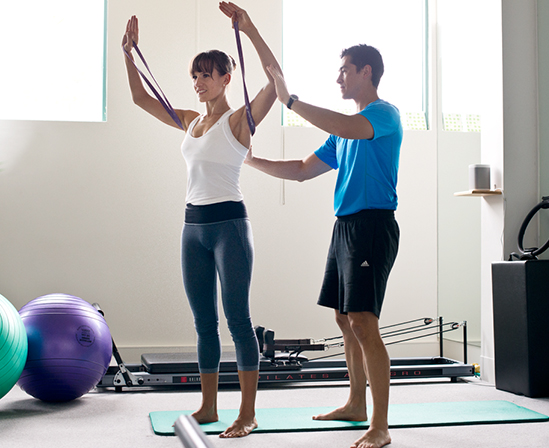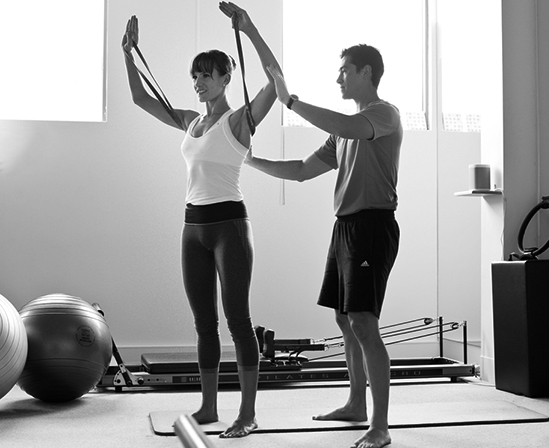3 Reasons to Strength Train Your Patients
By John Contreras. Physiotherapist, Pilates Instructor (APPI Master Trainer), Certified Strength & Conditioning Specialist (NCSA)
3 Reasons to Strength Train Your Patients.
Strength or resistance training involves much more than simply going to the gym a couple of times per week. There is a science behind the prescription of exercises, dosage and loading plan, that as health professionals we need to have a clear understanding of in order to safely guide our patients through their rehabilitation. In fact, resistance training is more about the design of the programme than the exercises themselves. For example, even a Pilates exercise on the reformer can become a great resistance training exercise given the correct dosage.
Sure the idea of strength training can make some patients (and health professionals) apprehensive. The concern of aggravating an injury may be present, but so is the concern that a patient may continue to become de-conditioned post injury. Also, I don't think many of us go through a day without at least one client asking 'so what can i do to prevent this injury happening again?'. Thankfully these days my answer is both simple and evidence based - I tell them the key is to improve their strength. It would be wonderful if this was an easy process. Though the exercises themselves don’t need to be complicated, nor utilising complex dosage strategies, gaining strength requires some effort with the American College of Sports Medicine suggesting exercise intensity of greater than 70% 1 rep max is required to elicit a neuromuscular response. This is why walking won’t cut it, nor will doing a few exercises that generally feel easy to complete. However; the right programme that considers the healing pathology of the patient and progresses the load appropriately, can lead to significant strength gains.
As such, I would encourage all health professionals to consider introducing a suitable resistance training programme into their patient’s rehabilitation for these three reasons:
1: Resistance Training is a valid treatment option for musculoskeletal rehabilitation.
A recent systematic review using data from 1545 rehabilitation patients demonstrated that strength training ‘can be used successfully with several musculoskeletal injuries, in particular those of the chronic varieties’ (Kristensen and Franklin-Miller, 2012). Resistance training improved functional outcomes in chronic low back pain, knee osteoarthritis, chronic tendonopathy and post hip replacement patients (Kristensen and Franklin-Miller, 2012.) Other studies have shown that a structured resistance training programme can reduce pain and improve function in other musculoskeletal presentations such as neck pain (Gross, 2015), groin pain (Jensen, 2012), shoulder pain (Andersen, 2014) and also osteoporosis (Gomez-Cabello, 2012). So there are not many patients who wouldn’t benefit from more reps.
2: Strength training reduces sports injury risk
A recent systematic review using data from over 26000 patients showed that ‘strength training reduced sports injuries to less than a third’ and suggested that strength training may also halve overuse injuries (Lauersen et al, 2014). Not a bad justification to add a structured resistance training programme into your patient’s management.
3: Strength Training is an easy option
When I started using strength training as a treatment tool, I had to consider what would help patient compliance. Sure, some patients were already members of a gym and had access to a wide range of machines and weights, however; most did not, nor were they initially likely to invest in a gym membership. Thankfully resistance training doesn’t need to involve large weights, squat racks, benches or sweaty mats in a gym with blaring music. The benefit we have as health professionals delivering resistance training is that our clients are generally starting from a low base. Meaning that in order to provide the appropriate dosage to elicit the physiological response, bodyweight is ideal in most cases. In order to add further resistance, I tend to use a combination of resistance and power bands. Not only are they easy to store and transport, they are incredible versatile and quite affordable. In my experience, simply utilising bodyweight exercises with a few bands for added resistance is perfect for the first 4-6 weeks of many strength training programmes. Keeping things simple makes it easier for clients to continue at home independently.
So in summary, resistance training:

- is effective in treating a range of common musculoskeletal conditions
- is effective in reducing sports injury risk
- is easy to deliver.

